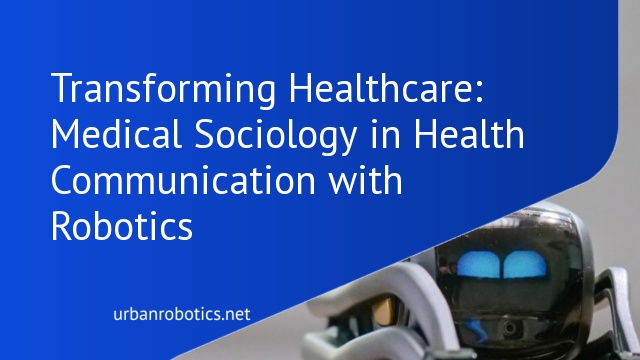Understanding Medical Sociology
Medical sociology explores the social dimensions of health, illness, and healthcare. It examines how societal factors influence medical practices and patient outcomes.
Key Concepts in Medical Sociology
Medical sociology focuses on several key concepts. Social determinants of health analyze how factors like socioeconomic status, race, and gender influence health outcomes. Health disparities study inequities in healthcare access and quality among different population groups. The patient-provider relationship investigates the dynamics between healthcare professionals and patients, emphasizing communication patterns and trust-building. Institutional structures in healthcare look into how healthcare organizations function and impact patient care.
The Role of Medical Sociology in Health Communication
Medical sociology plays a crucial role in health communication by identifying how social factors affect interactions within healthcare settings. It facilitates a better understanding of patient needs and preferences by examining the sociocultural contexts. Effective health communication grounded in medical sociology improves the quality of patient care, leading to better health outcomes. By integrating sociological insights, healthcare providers can develop communication strategies that are culturally sensitive and patient-centered.
The Intersection of Robotics and Health Communication
Robotic systems are transforming health communication by improving efficiency and patient outcomes. This intersection highlights the need for an intricate understanding of medical sociology’s role in robotics to address complex healthcare dynamics.
Types of Robotics in Healthcare
Healthcare deploys various types of robots, each serving distinct roles. Surgical robots assist in precise procedures, like da Vinci systems. Rehabilitation robots enhance physical therapy outcomes. Social robots, such as Paro, provide emotional support to patients. Autonomous delivery robots like TUG transport supplies in hospitals. These examples show the diverse applications of robotics in healthcare settings.
Advantages of Robotics in Health Communication
Robotics offers significant benefits in health communication. They enable consistent and accurate information delivery, reducing human error. Interactive robots, like Pepper, enhance patient engagement and education. Remote presence robots facilitate telehealth, improving access to care. These advancements lead to better patient understanding and compliance, ultimately improving healthcare outcomes.
Case Studies and Real-World Applications
Exploring case studies provides valuable insights into how medical sociology and robotics intersect in health communication. Here, we’ll discuss successful implementations and lessons learned from key case studies.
Successful Implementations of Robotics in Health Communication
Several healthcare settings have successfully implemented robotics in health communication. For example, Cedars-Sinai Medical Center in Los Angeles uses robotic systems to assist in surgeries, reducing recovery times and improving precision (Cedars-Sinai). Another instance is the use of robotic companions in elderly care facilities in Japan. These robots, such as the PARO therapeutic robot, enhance patient engagement and emotional support (PARO). Both cases demonstrate the practical benefits of integrating robotics into healthcare.
Lessons Learned from Case Studies
Case studies teach us valuable lessons in applying medical sociology to health communication with robotics. First, understanding patient perspectives is crucial. Effective communication must consider cultural and emotional factors to ensure patient acceptance and trust. Second, interdisciplinary collaboration enhances robotic integration in healthcare, with sociologists, technicians, and healthcare professionals working together. Lastly, continuous training and support are essential for healthcare staff to adapt to new robotic technologies, ensuring seamless integration and optimal patient outcomes. These lessons emphasize the importance of a holistic approach.
Challenges and Ethical Considerations
The integration of robotics into healthcare brings specific challenges and ethical issues that need to be addressed. We must carefully navigate these areas to ensure a seamless and responsible adoption of robotic technologies.
Technical and Operational Challenges
Technical challenges impede the effective use of robotics in healthcare. Reliability issues, system malfunctions, and integration difficulties frequently occur. High costs associated with robotic systems and maintenance strain budgets, limiting widespread adoption. Operational challenges such as staff training, adapting workflows, and ensuring smooth human-robot collaboration are critical. Overcoming these requires ongoing investment, interdisciplinary collaboration, and robust planning.
Ethical Issues in Robotic Health Communication
Ethical issues arise from the use of robotics in health communication. Privacy concerns about patient data security emerge with the increased digital interaction. The potential for reduced human interaction can lead to emotional and psychological impacts on patients, making it essential to balance technology with human touch. Issues of accountability and consent must be managed to ensure that robotic actions align with ethical standards. Addressing these concerns demands a thorough ethical framework and continuous ethical vigilance.
Future Directions
Medical sociology in health communication with robotics continues to evolve rapidly. Numerous innovations and their impacts on the field of medical sociology underscore the need for ongoing research and adaptation.
Innovations on the Horizon
Robotic advancements are paving the way for groundbreaking developments in healthcare. We see AI-driven diagnostic robots, context-aware therapeutic robots, and telepresence robots becoming more prevalent. These innovations promise to revolutionize patient care, providing faster, more accurate diagnoses and personalized treatment options.
Potential Impact on Medical Sociology
The integration of advanced robotics in healthcare is set to redefine social dynamics within medical institutions. Patient-provider interactions will change, necessitating new sociological frameworks to address shifts in trust, authority, and communication patterns. As automated systems take on more health-related tasks, our understanding of traditional healthcare roles will need to adapt to these evolving technologies.
Conclusion
As we embrace the integration of robotics in healthcare it’s clear that medical sociology plays a crucial role in navigating this transformation. The sociological aspects help us address ethical and practical challenges ensuring that technological advancements benefit both patients and providers.
By understanding the evolving dynamics between humans and robots in medical settings we can better prepare for the future of healthcare. Continuous research and adaptation are essential as we witness innovations like AI-driven diagnostic tools and telepresence robots reshaping patient care.
The future of healthcare will undoubtedly be influenced by these advancements requiring new frameworks to manage changes in patient-provider interactions and healthcare roles. As we move forward let’s remain committed to exploring and addressing the sociological implications of robotics in health communication.





